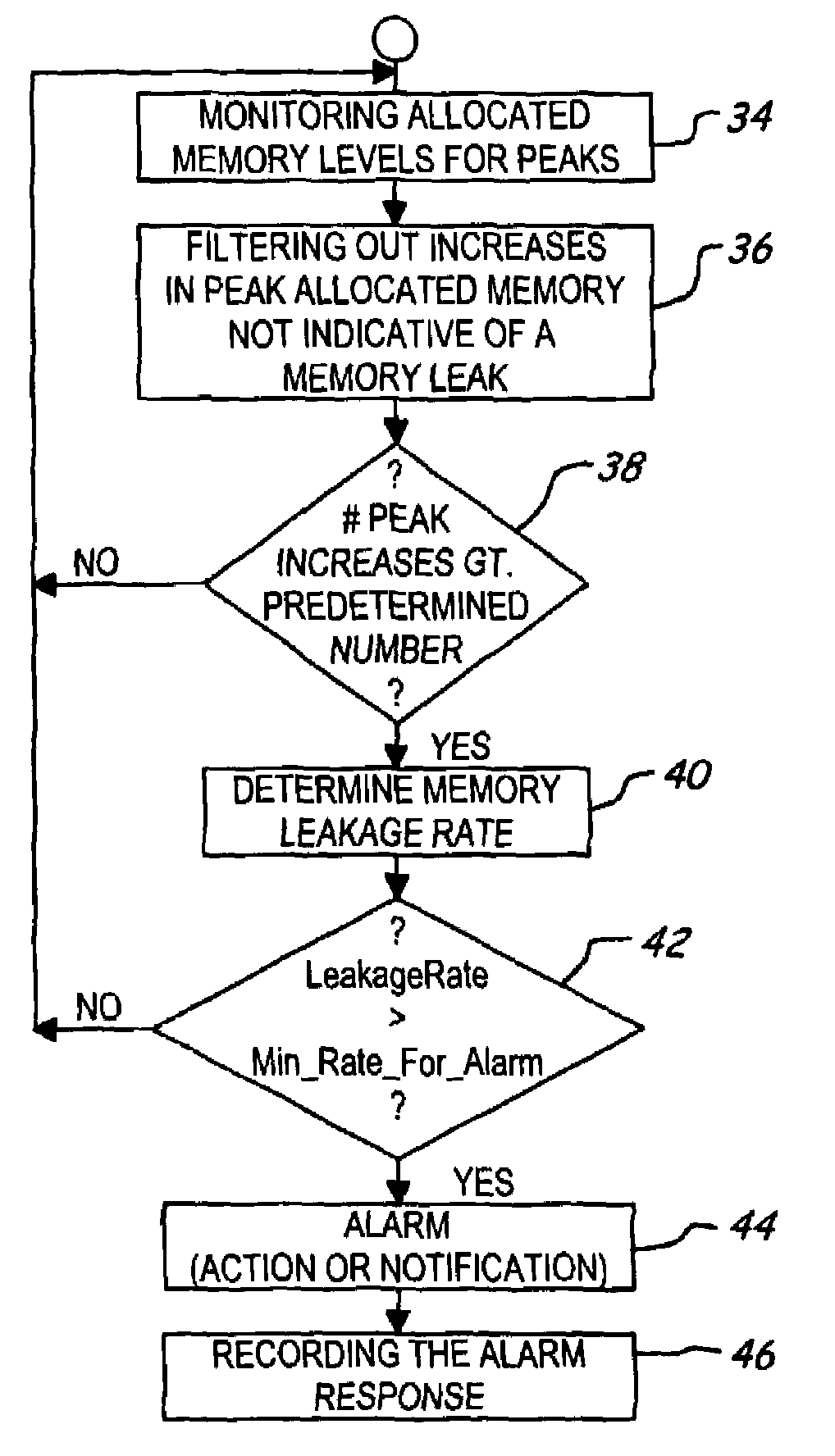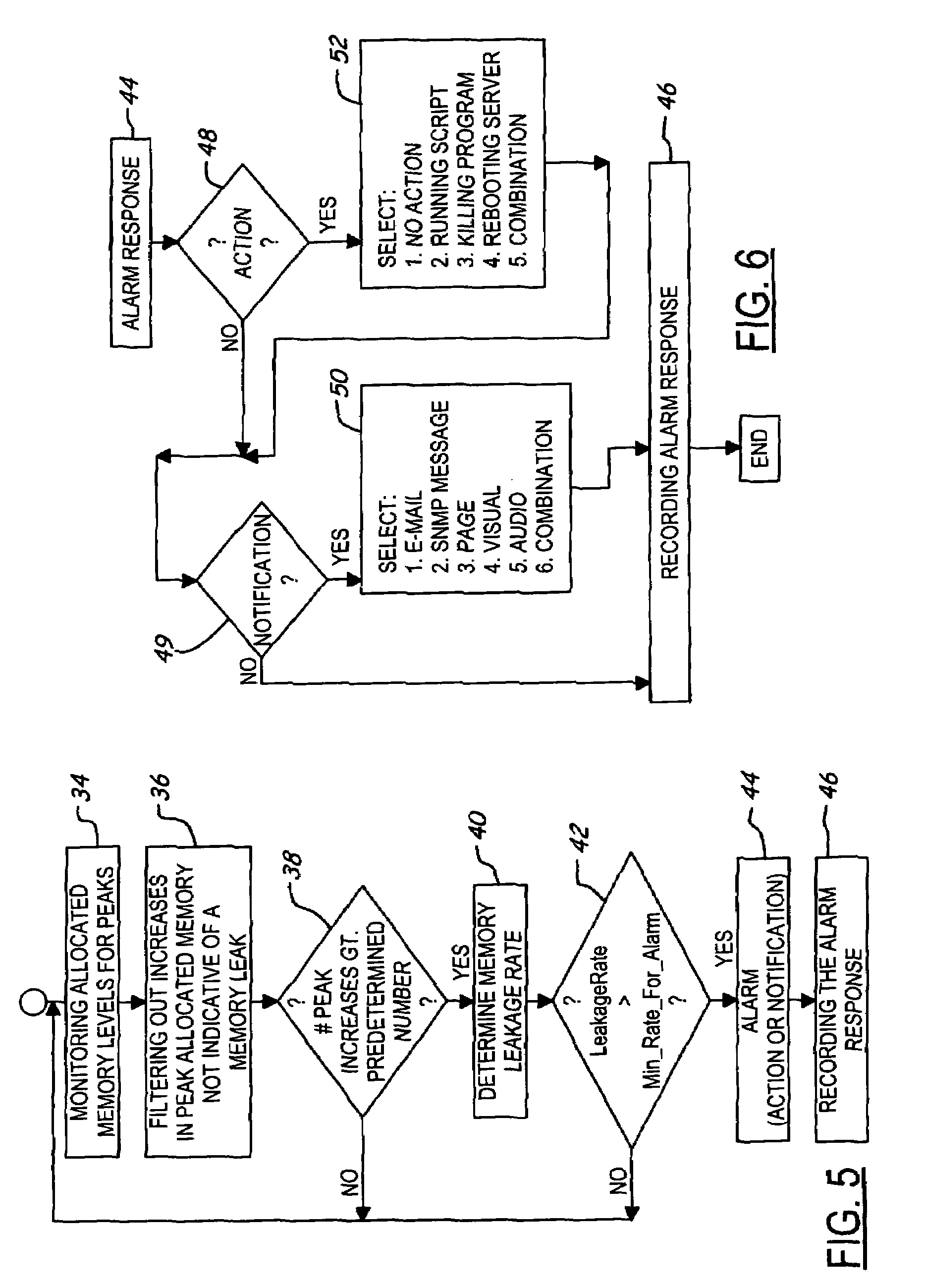Apparatus and method for detecting memory leaks
a technology of memory leakage and apparatus, applied in the field of system and method detection of memory leakage, can solve the problems of memory leakage consuming system resources, memory leakage frequently exist in software delivered to end users, and the failure to release allocated memory is a very common programming error
- Summary
- Abstract
- Description
- Claims
- Application Information
AI Technical Summary
Benefits of technology
Problems solved by technology
Method used
Image
Examples
Embodiment Construction
[0019]Referring now to the drawings wherein like reference numerals are used to identify identical components in the various views, FIG. 1 shows a computer 10 having a memory leak detection and reporting system 12 according to the invention. The system 12 includes (i) a monitoring agent (“agent”) 14 for monitoring peak allocated memory levels at a predetermined sampling frequency; (ii) a user interface 16 for configuring operating parameters of system 12; and (iii) a reporting mechanism 18 for logging events, generating notifications and / or taking prescribed actions. FIG. 1 shows a stand-alone embodiment wherein system 12 executes on the same computer 10 as a monitored application 20. Monitored application 20 has an associated allocated memory level in a memory 22. It should be understood that the monitored application may employ or use memory from one or more memory pools (if supported by the operating system), and the present invention is configured to be compatible with such an a...
PUM
 Login to View More
Login to View More Abstract
Description
Claims
Application Information
 Login to View More
Login to View More - R&D
- Intellectual Property
- Life Sciences
- Materials
- Tech Scout
- Unparalleled Data Quality
- Higher Quality Content
- 60% Fewer Hallucinations
Browse by: Latest US Patents, China's latest patents, Technical Efficacy Thesaurus, Application Domain, Technology Topic, Popular Technical Reports.
© 2025 PatSnap. All rights reserved.Legal|Privacy policy|Modern Slavery Act Transparency Statement|Sitemap|About US| Contact US: help@patsnap.com



